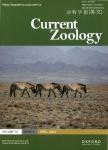Understanding the basic biology underlying the flavor world of children
Understanding the basic biology underlying the flavor world of children作者机构:Monell Chemical Senses Center
出 版 物:《Current Zoology》 (动物学报(英文版))
年 卷 期:2010年第56卷第6期
页 面:834-841页
核心收录:
学科分类:1004[医学-公共卫生与预防医学(可授医学、理学学位)] 100404[医学-儿少卫生与妇幼保健学] 10[医学]
主 题:Flavor learning Infants Children Preferences Dietary intake Prevention
摘 要:Health organizations worldwide recommend that adults and children minimize intakes of excess energy and salty, sweet, and fatty foods (all of which are highly preferred tastes) and eat diets richer in whole grains, low- and non- fat dairy products, legumes, fish, lean meat, fruits, and vegetables (many of which taste bitter). Despite such recommendations and the well-established benefits of these foods to human health, adults are not complying, nor are their children. A primary reason for this difficulty is the remarkably potent rewarding properties of the tastes and flavors of foods high in sweetness, saltiness, and fatness. While we cannot easily change children's basic ingrained biology of liking sweets and avoiding bitterness, we can modulate their flavor preferences by providing early exposure, starting in utero, to a wide variety of flavors within healthy foods, such as fruits, vegetables, and whole grains. Because the flavors of foods mothers eat during pregnancy and lactation also flavor amniotic fluid and breast milk and become preferred by infants, pregnant and lactating women should widen their food choices to include as many flavorful and healthy foods as possible. These experiences, combined with repeated exposure to nutritious foods and flavor variety during the weaning period and beyond, should maximize the chances that children will select and enjoy a healthier diet [Current Zoology 56 (6): 834-841, 2010].



